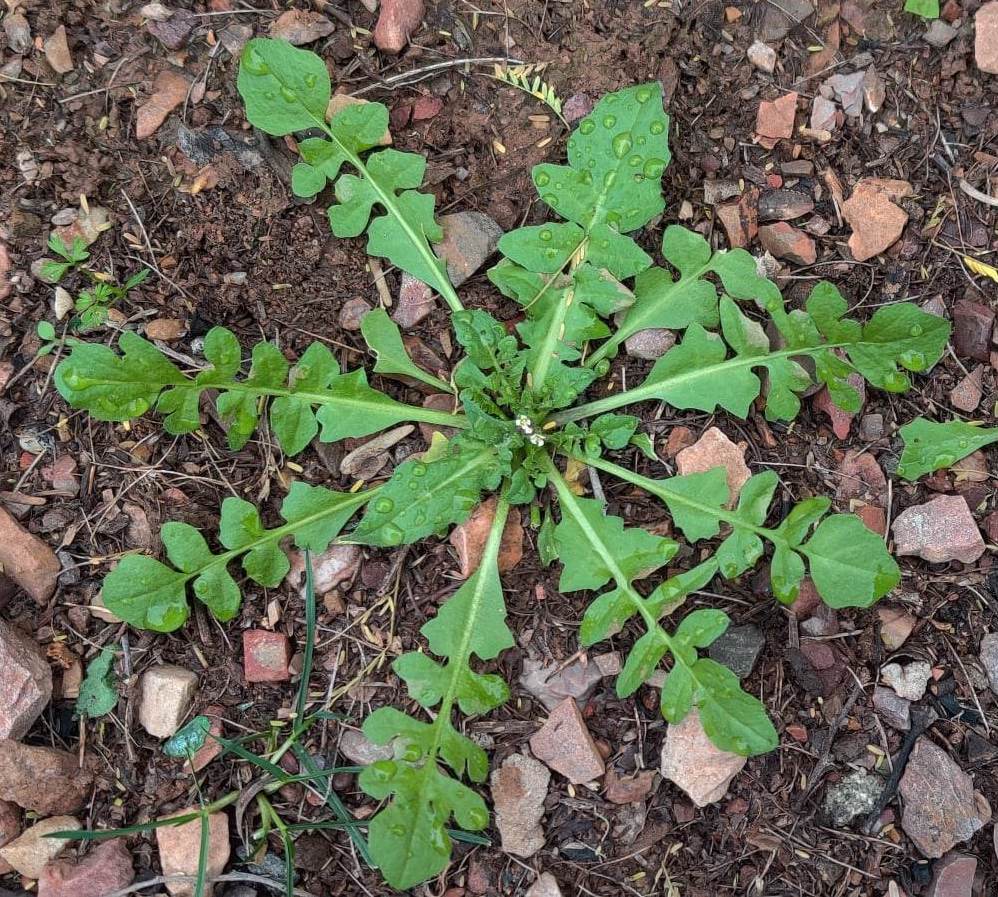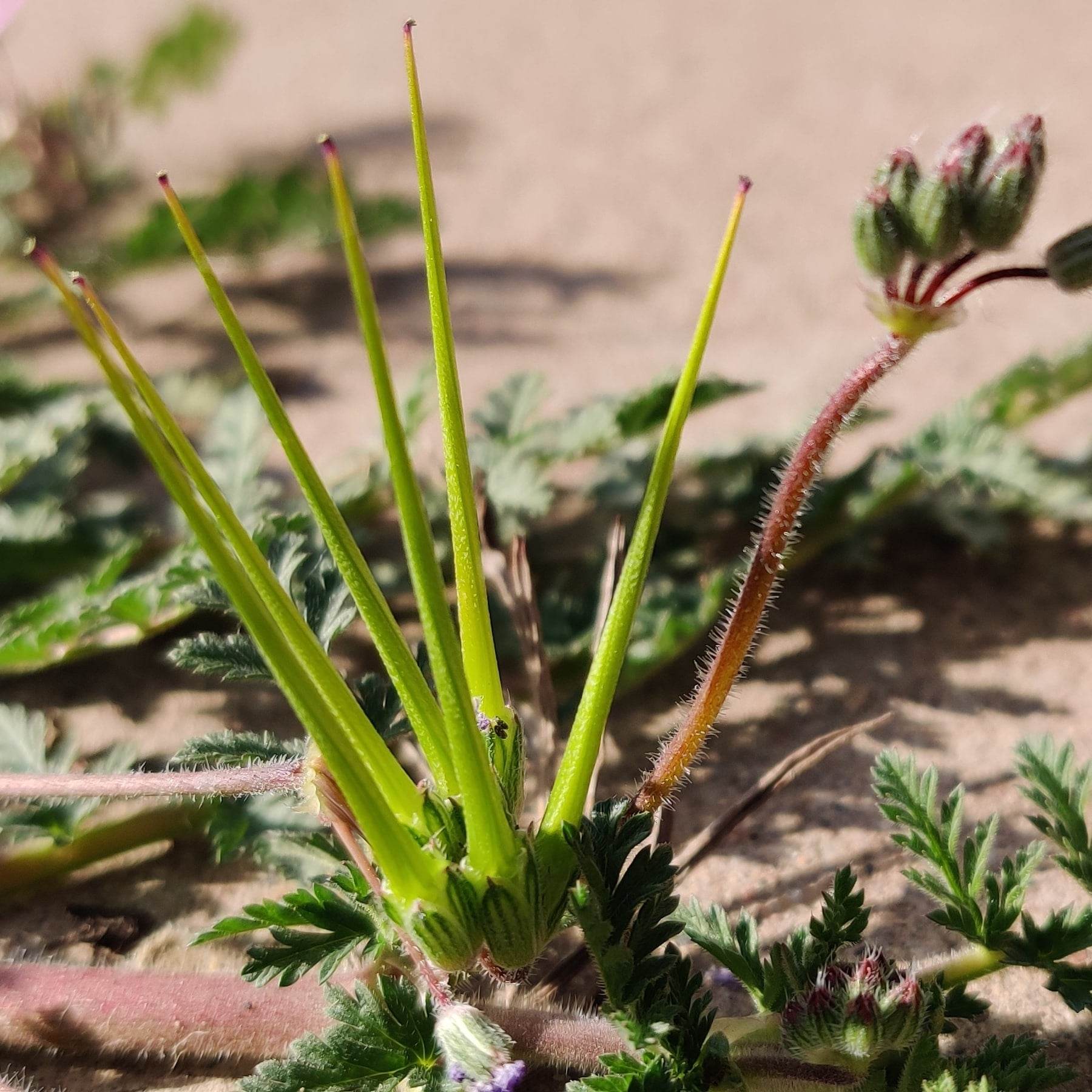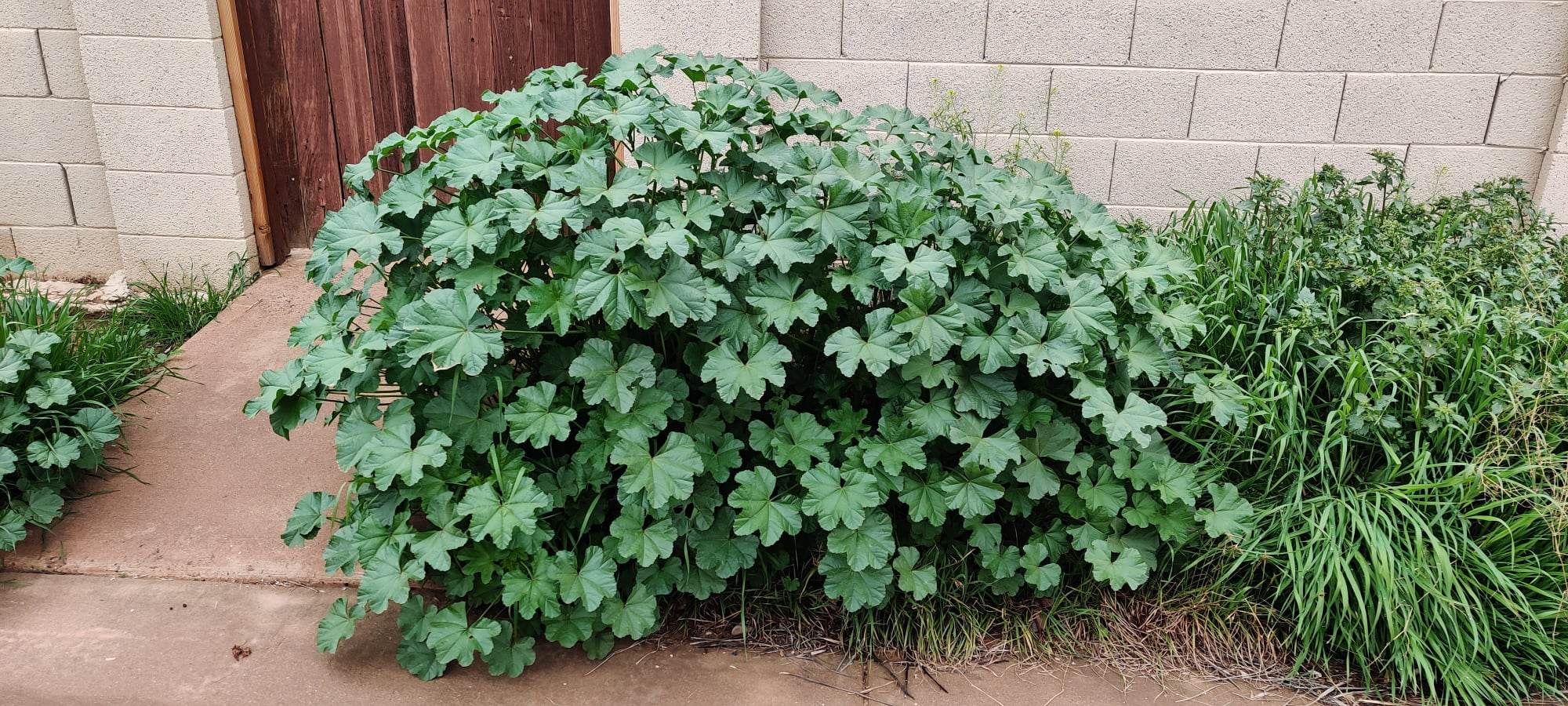
Edible Wild Weeds of Winter
Jan 16, 2023In the late fall and wintertime across the southern half of the U.S.(or anywhere where it doesn’t freeze), the primary edible plants available to the forager are common yard weeds.
When it comes to eating weeds, most people find the idea either very strange or outright disgusting, but for the purpose of this article I’m going to assume you’ve already been convinced of the wonderful nutritional benefits of harvesting wild plants, weeds or otherwise, and get straight to telling you how it's done.
I will make a quick note before we jump into it, and that is that weeds are only a small portion of the wild plants available to the forager. I feel like I have to say this, because sometimes I get labeled as “the guy that eats weeds”, when in reality there’s tons of different wild food plants that I harvest including beans, fruit, nuts, vegetables, seeds, and even flowers- not just “weeds”.
First Things First- Safety Considerations and Hazards of Eating Wild Weeds
Before we get to the issue of toxic lookalikes(which is especially important to consider in this discussion), first I’ll list areas where you should not harvest edible plants. It’s pretty simple. First, any area that has been sprayed with pesticides or herbicides should not be harvested from. You might ask “how do I know if an area has been sprayed?”, and the simple answer is: you don’t.
Unless you ask the person who owns the land you want to forage, there’s no way to know. Also, keep in mind that there can be toxic runoff into an otherwise clean yard if the next door neighbors have sprayed.
When it comes to public areas like parks, I have found that the more urban the area is, and/or the wealthier an area is, the more likely herbicides will be used there. In other words, little podunk towns in the middle of nowhere are unlikely to spray pesticides, compared to an urban park in the middle of a rich neighborhood.
It's difficult to tell for sure if an area is sprayed, but it’s usually easy to guess. If an area looks run down with weeds growing all over the place, it probably doesn’t get sprayed. If it looks manicured, it probably does get sprayed. If you’re observant, you can sometimes see the telltale signs of herbicides in the plants themselves. Directly after application, plants will look wilted and their leaves will sometimes have brown dead spots. However, this is not a reliable indicator because it’s only visible for a short time.
Personally, I never risk it. Living in an urban area for the past 5 years, I have almost completely stopped foraging for edible plants inside city limits, because virtually all public areas near my home are sprayed profusely with herbicides. Back in the good ol’ days when I lived in a medium-sized town in Texas with lots of random empty lots, run down parks, and uninhabited strips of woods, I would forage all over the place. But here in the city, no way!
The next two considerations are simple: Don’t forage anywhere where cats and dogs roam(for obvious reasons), and don’t forage from areas that get runoff from a road.
At the end of the day, you should harvest plants from places that look clean. Here in the city, I’m too grossed out to harvest weeds most of the time. That’s why I harvest them from out in the wild. But, if you happen to have a friend with a garden, they probably don’t spray any chemicals in their yard, and chances are you can harvest edible weeds right from their garden beds! They’ll even thank you for it!
Avoiding Toxic Lookalikes
When it comes to identifying plants correctly and avoiding toxic lookalikes, there’s no more notorious group of plants than weeds. First of all, there’s so just so many of them that identifying weeds can be very overwhelming at first.
Secondly, it’s usually the young leaves that we want to harvest and eat. For most edible weeds you really want to get the leaves when they’re first popping out of the ground, because that’s when they’re the most tender and mild-tasting. As plants mature and put out flowers, they often get tougher, hairier, and/or more bitter. Therefore, to really enjoy edible weeds, it's crucial to learn how to identify them without the presence of flowers and seeds. This can be very difficult, especially for beginners, because the flowers and seeds are often what makes a plant easy to recognize, whereas the leaves all on their own can prove much more tricky.
So here’s how identifying a new plant usually goes:
- First, you see a plant that you think is edible, but without flowers you aren’t confident enough to make a firm identification, so you wait.
- Once the distinct flowers and seeds show up, you confirm your identification, but at that point the plant has become too tough or bitter to be enjoyable, so you try to memorize the appearance of the leaves and wait until next year when it sprouts again.
- Next year the plant sprouts again. You may be ready to eat it this time, or you might still second guess yourself. After all, it’s been a whole year since the last time you saw the plant at this stage, and now your memory is a bit fuzzy. So, you wait again for it to flower, and observe it for yet another year.
There have been plants that I waited a full 3 years before consuming because I just wasn’t confident enough yet, and there have been other plants that I ate the very first day I found them. It all depends on your skill level, and how distinct the individual plant in front of you is.
Much more could be said about the process I use to confidently identify plants and avoid toxic lookalikes. It involves cross referencing, learning at least basic botanical terms, and finding reliable resources with decent pictures of each plant. This is the type of information I teach in my online courses, and perhaps I’ll dedicate a whole article to it in the future.
For now, I will leave you with this advice: 1. Please do not use this article as your sole reference for identifying and consuming plants and 2. Do not be in a hurry to eat new plants. Take your time, and remember: Even if you are 100% sure, you can still be wrong.
Normally my articles are more than enough to show you how to identify the plant I’m writing about, but like I said earlier, edible wild weeds are in a different class. They can be notoriously difficult for beginners to identify, and more time and effort will be needed to make sure you get it right.
THE PLANTS
Henbit (Lamium amplexicaule)
Identification
- Henbit is in the mint family, and although it doesn’t have even a hint of minty flavor or smell, the stems(like all mints) are SQUARE.
- The leaves of henbit are oppositely arranged(they mirror each other on the stem).
- Henbit has distinctly “scalloped” leaf margins (see pictures).
- Once the plant starts to mature, the upper stem leaves become “sessile”, which means they attach directly to the stem. Once this happens, it makes henbit very distinct and easy to recognize, but it also means the plant is beyond its prime harvesting time.
- Pink flowers cover whole fields when henbit starts to flower. At this stage the plant is unmistakable, but way past time for harvest.




Edible Uses
The leaves and stems of young henbit are edible. Once the plant starts to mature, it gets tough and the flavor becomes unpleasant. Like most weeds, the trick is to learn how to identify henbit by its leaves alone, without flowers to aid your identification. That way you can identify it when it first comes out of the ground.
Shepherd's purse (Capsella bursa-pastoris)
Identification
1. Shepherd's purse leaves can be quite variable, both in size and appearance. The pictures below show the typical recognizable shape. Like other plants in the mustard family, they form basal rosettes and have leaves with deeply divided lobes.
2. Flowers of shepherd's purse are small, white, and like all mustards, 4-petaled.
3. The most distinct feature of shepherd's purse are their heart-shaped seed pods.
4. Leaves are hairy.





London rocket basal rosette(left) vs shepherd's purse rosette(right).
Edible Uses
Shepherd's purse has edible leaves, but sometimes finding large, tender leaves can prove difficult. Like many other weeds, its leaves can be small and virtually worthless when growing out in the open, but if it finds a shady, damp little nook to grow in, they can grow quite large and tender.
London rocket (Sisymbrium irio)
Identification
1. London rocket leaves can be very variable. Like other mustards, they form basal rosettes with deeply divided leaves. Sometimes the lobes can be more rounded, and sometimes they are more spear-shaped. I have added three different pictures of the rosettes to help you with identification.
2. The leaves on the stems typically take on a much more spear-shaped appearance, especially at the apex.(See the picture where I'm holding two leaves.)
3. London rocket has 4-petaled yellow flowers with thin seed pods typical of the mustard family.
4. London rocket leaves are hairless, and often have a distinctly brightly colored midrib.



Note the brightly colored midribs of these London rocket leaves.



Note the spear-like apex of the lower leaf in this picture. These leaves were taken off of the stalk. (In many plants, the leaves on the stalk are a different shape than the leaves of the lower rosette.)

A yard full of young London rocket greens.
Edible Uses
London rocket greens are best young, where they are comparable to arugula. They can be quite spicy, and as they age they quickly become very bitter and even more spicy. Older leaves should be cooked due to their harsh flavor.
Storksbill geranium (Erodium cicutarium)
Identification
- A basal rosette of pinnately compound leaves. The plant is stalkless. Flowers and seed pods come off of thin stems directly from the center of the plant.
- Plant is hairy, not hairless.
- 5-petaled pink flowers.
- Seed pods look like green needles that are borne upward-facing(vertical). This is the most distinct feature of the plant.





Edible Uses
Storksbill geranium is an extremely common and very hardy, drought tolerant weed. 99% of the time it is seen the leaves are too small, hairy, and tough to enjoy, but like many weeds, when growing in the right conditions the leaves will be nice and tender.
Sow thistle (Sonchus oleraceus)
Identification
1. Sow thistle can prove difficult to identify due to the numerous other plants that look similar to it. The leaves are deeply divided with a large, almost triangular apex.
2. The leaf margins are toothed with a spiky appearance, hence the name sow thistle.
3. The flowers are dandelion-like in appearance, but unlike dandelion they grow from a vertical central stalk.
4. Leaves coming off of the stalk have bases that distinctly wrap around the stalk. (See picture.)
5. The youngest leaves of sow thistle have almost a spoon-like appearance, being very thin near the base, but wide and rounded near the apex(see picture).





Edible Uses
Sow thistle is a bitter green, therefore the leaves are best cooked. One of my favorite wild food authors of all time, Green Deane, frys the leaves in butter and adds bacon. Just about any food tastes good when fried in butter and served with bacon!
Mallow (Malva neglecta)
Identification
1. Herbs with palmate leaves and multiple leaf veins all arising from a central point.
2. Leaves with a "ruffled" appearance, especially noticeable on newly emerging leaves.
3. Mature leaves have a red dot where the leaf meets the stem.
4. Seed pods are circular with divisions reminiscent of a wheel of cheese.




Edible Uses
Both young and old mallow leaves are edible, as well as the immature fruits(see picture). It is a very mild and good-tasting plant, but the older leaves tend to become a bit hairy, so are better cooked. That being said, even on the older plants it is usually possible to find new leaves emerging.
Goosefoot or lamb's quarter (Chenopodium murale)
Identification
1. One of the easiest weeds to identify, goosefoot can readily be recognized by a few key features. First of all, the leaves are roughly triangular or egg-shaped in overall appearance, with lobes or rounded teeth.
2. The leaves are covered in a white, powdery substance that can be felt with the fingers. This is a distinct feature not common in other plants. Some other plants, grapes for example, have a white powder known as a bloom, but it is usually too fine to be felt when touched. Goosefoot powder has a grainy feel.
3. The stems of goosefoot are often red, especially where the leaves meet the stem.
4. Goosefoot flowers are white, or sometimes reddish, tiny, and spherical. Most people would not recognize them as flowers, but small green clusters.





Edible Uses
There are numerous species of goosefoot across the U.S., and to my knowledge they are all edible. The leaves and seeds are the parts eaten, but I only have experience with the leaves. Unlike most edible weeds, goosefoot greens stay tender and mild even when mature, although the type of soil goosefoot grows in can affect its flavor.
Common groundsel (Senecio vulgaris) TOXIC



Note the black-tipped sepals of common groundsel. These sepals are one distinct identifying characteristic.





